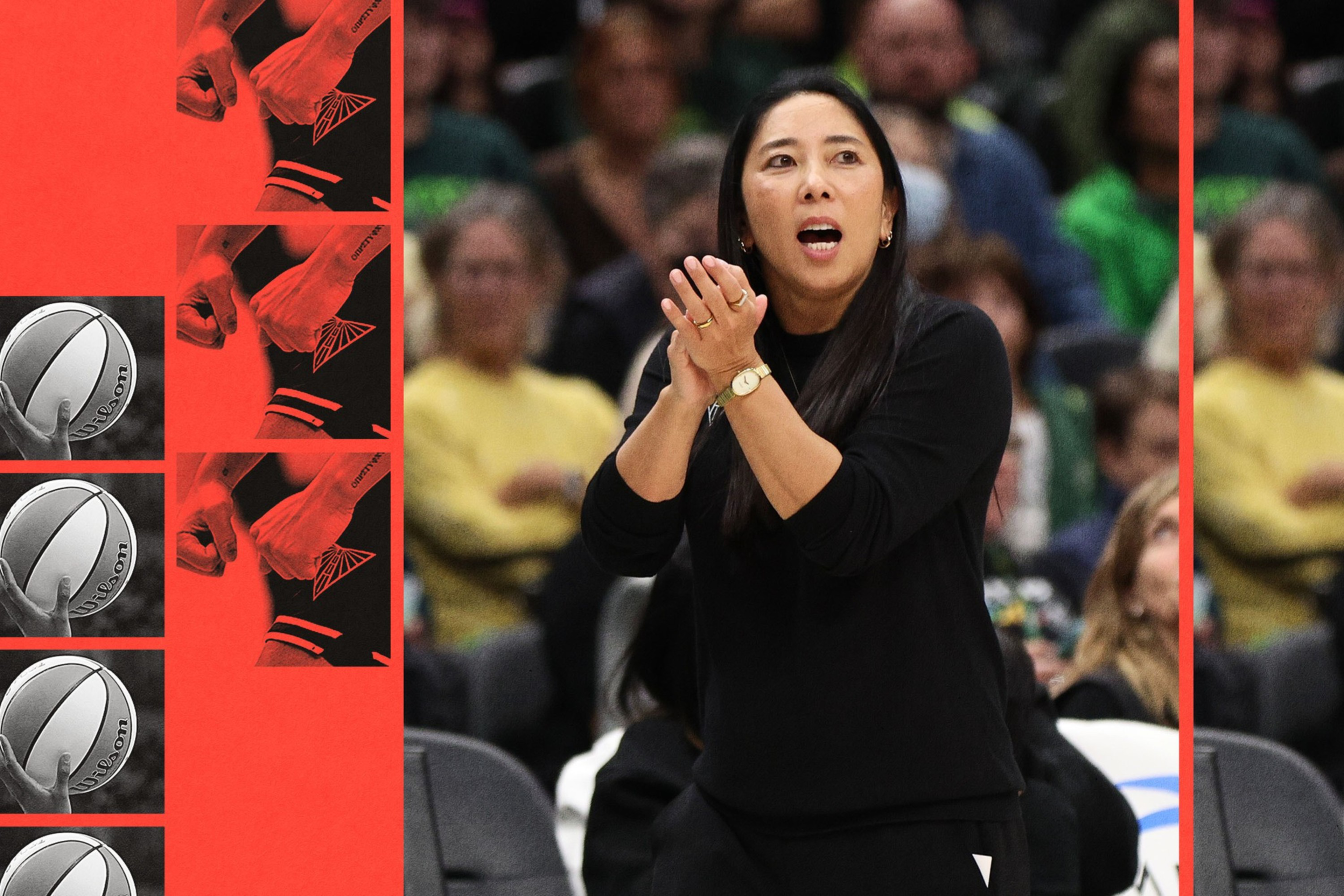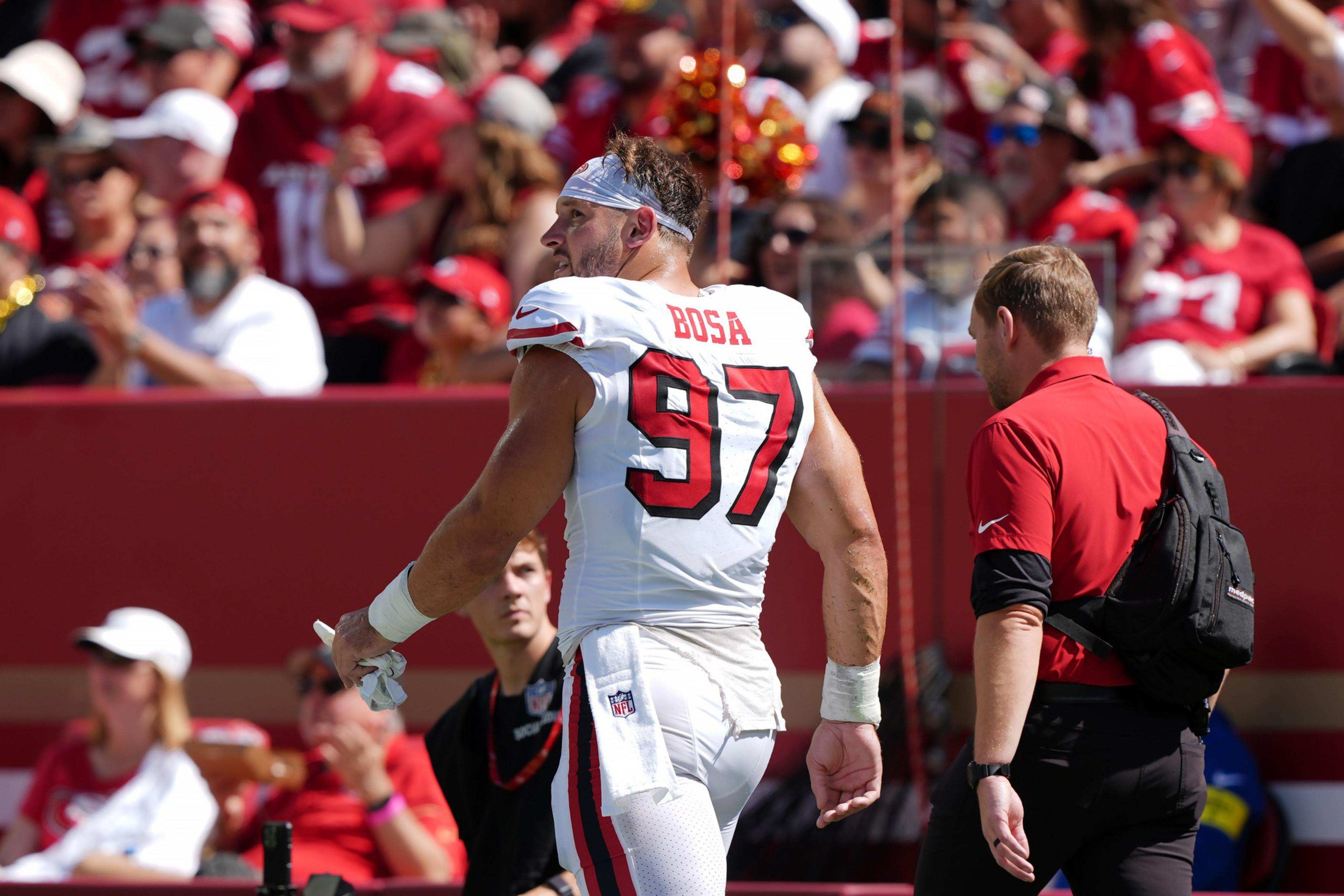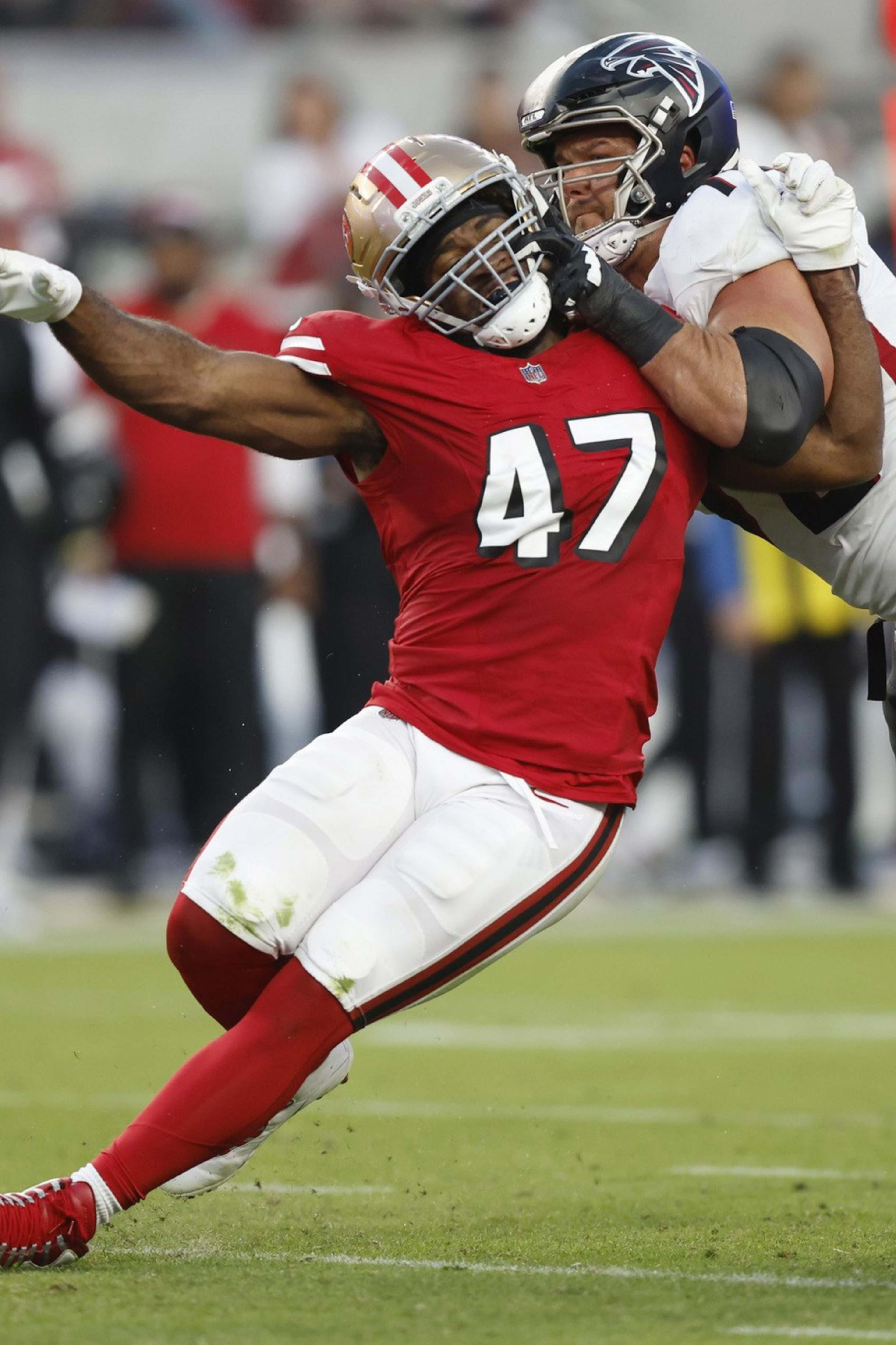Want more ways to catch up on the latest in Bay Area sports? Sign up for the Section 415 email newsletter here and subscribe to the Section 415 podcast wherever you listen.
Even after the 49ers added four players through trades in 2025, general manager John Lynch — for obvious reasons — wanted to add a fifth ahead of Tuesday’s deadline. New York Jets pass rusher Jermaine Johnson was the 49ers’ most realistic target, but a deal was not completed.
The Jets wanted (opens in new tab) a second-round pick for Johnson, a 2023 Pro Bowler who tore his Achilles in 2024 but has returned — albeit at lower efficiency clips — this season. The 49ers weren’t willing to part with anything better than a fourth-round pick, which is in the ballpark of what they paid for edge rusher Bryce Huff back in spring. (Not coincidentally, both Johnson and Huff played under 49ers defensive coordinator Robert Saleh, who used to coach the Jets.)
It’s easy to understand both teams’ perspectives.
New York held a wildly lucrative fire sale on Tuesday, trading cornerback Sauce Gardner — a player whose performance has steadily declined over his four years in the NFL — to the Indianapolis Colts for a return that included two first-round picks. The Jets also dealt defensive tackle Quinnen Williams, who has one sack this season, to the Dallas Cowboys for a return that included a first- and second-round pick.
Section 415: How Natalie Nakase turned the Valkyries into an immediate force

Section 415: Tim Kawakami analyzes the 49ers, Giants, and Warriors

Section 415: Min Woo Lee, Steph Curry, and the story of The Bay Golf Club

After fetching such high returns from the Colts and Cowboys, it shouldn’t be surprising that the Jets stood pat on their asking price for Johnson.
Meanwhile, the 49ers had a very specific needle to thread.
They’re epically injured — but also 6-3. They’re contenders in a wide-open league — but also in the first season of a three-year competitive window, opened by a cap-driven youth reset in the 2025 offseason. Beyond that, the 49ers are chasing two of the NFL’s best teams — the Seattle Seahawks and Los Angeles Rams — in their own division as they delicately surf all these misaligned waves.
As the deadline approached, the only trades that could satisfy the 49ers’ unique situation involved players under contract beyond 2025 and at a price that wouldn’t severely dent the team’s stockpile of 2026 draft capital, which will be needed to complete the ongoing youth infusion next April.
“Of course, we want someone to help us out this year, but I’d love it not to be at the expense of our team next year,” 49ers coach Kyle Shanahan said in the days leading up to the deadline. “I know we all feel that way, and hopefully we can find a situation that does both.”
The 49ers did successfully make one such move a week prior: a late-round pick swap with the New England Patriots for pass rusher Keion White. That was one of the 49ers’ four 2025 trades — the others were for Huff, returner Skyy Moore, and running back Brian Robinson Jr. — which has already shrunk their 2026 draft ammo to a projected seven picks.

The 49ers were willing to make an exception for a superstar such as Cincinnati Bengals defensive end Trey Hendrickson, who’s led the league in sacks over each of the past two seasons. Hendrickson is intensely respected in the 49ers’ locker room. But Cincinnati wouldn’t budge off its demand of a first-round pick, a preposterous price for a player who’s set to become a free agent in a few months.
Even a second-round pick for the 26-year-old Johnson, who’s under contract through 2026, seems excessive. The 49ers were unwilling to follow Dallas and Indianapolis into the realm of imprudent spending just to catch a deadline-day dopamine rush.
Neither Hendrickson nor Johnson changed teams on Tuesday, verifying a simple truth: Had the 49ers spent the asking price for either of those two players, they would’ve been alone in their willingness to do so. Simply put, the entire league — with the glaring exception of Cowboys owner Jerry Jones — wasn’t willing to overpay at that level for defensive linemen (Lynch is undoubtedly OK keeping distance from Dallas’ strategy). Even the Philadelphia Eagles, who were aggressive in their pursuit of Miami’s Jaelan Phillips, finished their business with a third rounder.
The path forward for the 49ers is a fascinating one. Their playoff bid is reliant on a rediscovery of elite offensive production — certainly possible with quarterback Brock Purdy and receiver Ricky Pearsall both in line to return. The 49ers must simultaneously at least slow a defensive slide — they rank No. 26 in expected points added (EPA) on that side of the ball since Week 3 — that predictably began with season-ending injuries to stars Nick Bosa and Fred Warner.
A return to defensive mediocrity would give the 49ers a puncher’s chance, assuming the offense does hit that turbo button and the special teams continues excelling (after cutting kicker Jake Moody in Week 1, the 49ers have posted the third-highest special teams efficiency in the NFL).
Could overpaying for a pass rusher on Tuesday have helped the 49ers follow the red arrow on the graph above?

Possibly, but that would not have come with a guarantee. And it certainly would’ve threatened the 49ers’ longer-term outlook. A continued commitment to cost-controlled draft picks, with top-100 selections holding exceptional value, is the 49ers’ ticket to maintaining salary-cap solvency over the next few years.
In just the past two seasons, the 49ers have drafted Ricky Pearsall, Renardo Green, Dominick Puni, Mykel Williams, Alfred Collins, and Upton Stout — all of whom have already made significant contributions – in the first three rounds.
Instead of making another trade, the 49ers have chosen to bank on value transactions that they had already made. Their pass rush actually already enjoyed significant improvement thanks to last week’s two additions — White and veteran signee Clelin Ferrell — during Sunday’s win over the New York Giants.
And it’s timely that on Sunday, when the powerhouse Rams visit Levi’s Stadium for a high-stakes NFC West showdown, the 49ers’ first trade acquisition of 2025 will return from injury.
That’s Huff, whose speed rush was the winning difference the last time he was on the field against the Atlanta Falcons three weeks ago. It energized the 49ers into what was, by far, their best defensive performance without Bosa and Warner.
The 49ers acquired Huff in a high-value deal with Philadelphia in May. They’ll surrender either a fourth- or fifth-round pick (depending on if Huff reaches eight sacks this season) for two years of team control over the pass rusher, all while the Eagles pay for the majority of his 2025 salary.
That was undoubtedly a good trade for the 49ers, a fair price that clicked into place far ahead of the deadline. It’s no surprise that the 49ers were willing to pay a similar amount of draft capital for Johnson on Tuesday, but the Jets — wanting that second-round pick — didn’t oblige.
Sometimes, the best deals are the ones you don’t make.
“If [no good opportunity presents itself], you don’t do something just to do it,” Shanahan said before the deadline. “I’m also really excited about the guys we have in our building right now.”

